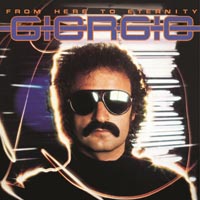2022-11-01
The Incredible Musical Biography of Dizzy Gillespie
Jazz music lovers have heard about Dizzy Gillespie at least once in their life. His work has been a staple of American Jazz and has inspired many musicians all over the world. Dizzy Gillespie was truly a legend, a pioneer who shaped the genre for generations to come.
Blog Body: Dizzy Gillespie was born in South Carolina in 1917 and grew up in Cheraw. He was always surrounded by music and was already playing the piano by the time he was four years old. However, it was the trumpet that would become his true passion. Dizzy’s first gigs were with Frank Fairfax and the Fairfax Orchestra, playing in theaters and dances.
Dizzy’s signature style was developed with the help of a fellow trumpeter by the name of Roy Eldridge. Eldridge was one of the most famous trumpet players at the time, and his virtuosic style had a significant influence on Dizzy’s sound. The two would play together on many occasions, and the younger Gillespie learned a great deal from his friend. This influence manifested in Dizzy’s ability to play complex, high notes with great skill and agility.
Dizzy Gillespie’s most famous album was The Cool World. The album is a soundtrack to the 1964 film of the same name. It features Dizzy’s big band and was recorded in New York City. The album is a testament to Dizzy’s musical mastery, and it highlights his ability to produce music that is both complex and enjoyable.
Dizzy’s most famous song is Night in Tunisia. Originally titled Interlude, Gillespie composed the song along with pianist Frank Paparelli in the mid-1940s. The song has since become a jazz standard and has been covered by numerous musicians, including Ella Fitzgerald and Sonny Rollins. Gillespie’s own version of the song remains the most popular and has been praised for its innovative melody and rhythm.
In terms of the artist himself, Dizzy Gillespie was widely regarded as a virtuoso trumpeter, band leader, and composer. His music defied cliches and expectations and became a bridge between bebop and Afro-Cuban jazz. He was also known for his trademark bent trumpet. He was a tireless performer and continued to tour and record until his death in 1993.
Conclusion: Dizzy Gillespie’s contributions to jazz music are truly immeasurable. His unique style, brilliant compositions, and incredible musicianship continue to influence and inspire generations of musicians. His work has left an indelible mark on American music and culture, and he is widely regarded as one of the most important figures in the history of jazz. If you haven’t listened to Dizzy Gillespie yet, there will never be a better time than now.
Blog Body: Dizzy Gillespie was born in South Carolina in 1917 and grew up in Cheraw. He was always surrounded by music and was already playing the piano by the time he was four years old. However, it was the trumpet that would become his true passion. Dizzy’s first gigs were with Frank Fairfax and the Fairfax Orchestra, playing in theaters and dances.
Dizzy’s signature style was developed with the help of a fellow trumpeter by the name of Roy Eldridge. Eldridge was one of the most famous trumpet players at the time, and his virtuosic style had a significant influence on Dizzy’s sound. The two would play together on many occasions, and the younger Gillespie learned a great deal from his friend. This influence manifested in Dizzy’s ability to play complex, high notes with great skill and agility.
Dizzy Gillespie’s most famous album was The Cool World. The album is a soundtrack to the 1964 film of the same name. It features Dizzy’s big band and was recorded in New York City. The album is a testament to Dizzy’s musical mastery, and it highlights his ability to produce music that is both complex and enjoyable.
Dizzy’s most famous song is Night in Tunisia. Originally titled Interlude, Gillespie composed the song along with pianist Frank Paparelli in the mid-1940s. The song has since become a jazz standard and has been covered by numerous musicians, including Ella Fitzgerald and Sonny Rollins. Gillespie’s own version of the song remains the most popular and has been praised for its innovative melody and rhythm.
In terms of the artist himself, Dizzy Gillespie was widely regarded as a virtuoso trumpeter, band leader, and composer. His music defied cliches and expectations and became a bridge between bebop and Afro-Cuban jazz. He was also known for his trademark bent trumpet. He was a tireless performer and continued to tour and record until his death in 1993.
Conclusion: Dizzy Gillespie’s contributions to jazz music are truly immeasurable. His unique style, brilliant compositions, and incredible musicianship continue to influence and inspire generations of musicians. His work has left an indelible mark on American music and culture, and he is widely regarded as one of the most important figures in the history of jazz. If you haven’t listened to Dizzy Gillespie yet, there will never be a better time than now.
Tag: Dizzy Gillespie, musical biography, best songs, playlist
2025-01-22
Girls Aloud: The Rise, Criticism, and Unwavering Popularity of the British Girl Band
Girls Aloud are one of the most iconic and successful girl bands to ever come out of Britain. From their infectious pop songs to their fashionably daring style, they have certainly reignited a love for female-fronted pop bands all over the world...read more
2025-01-21
The Remarkable Influence of The Gipsy Kings in Music
From their remarkable sound to the diverse cultural influence, The Gipsy Kings have made an impressive impact on music over the years. From worldwide fame to creative innovation, there are a number of things that can be said about this group and its individual members...read more
2025-01-21
What genre is XXXTentacion?
Ever been stuck trying to explain what exactly you're listening to when someone asks about XXXTentacion's music? You're not alone! He wasn’t just an artist; he was a chameleon, effortlessly moving through genres and bending them to his will.
A Unique Sound That Defied Labels
When it comes to XXXTentacion's music, the usual genre boxes don’t quite fit...read more
2025-01-20
Giorgio Moroder: The Architect of Modern Production Techniques
Giorgio Moroder is one of the most influential figures in the world of music, known for being a pioneer of electronic dance and disco music during the 1970s. His influence can be felt throughout all kinds of genres today, from EDM to electro-pop and beyond...read more
2025-01-19
The Good and Bad of Ginuwine's R&B Career
When it comes to modern R&B music, few artists have had as an innovative a career as Ginuwine. He quickly rose in the ranks of R&B stars after his 1996 hit single “Pony” made it to number one on several Billboard charts...read more
SUGGESTED PLAYLISTS








